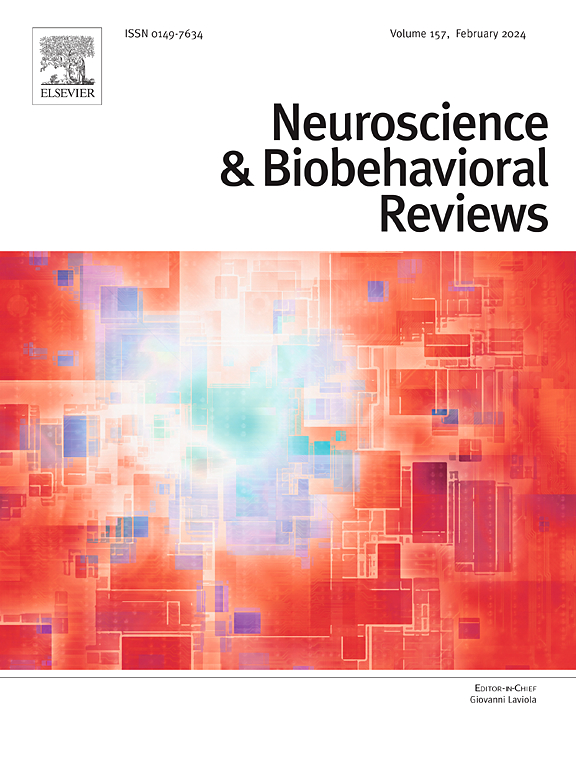从认知神经科学、多模态成像和临床应用的角度研究初级运动皮层以外的皮层兴奋性。
IF 7.9
1区 医学
Q1 BEHAVIORAL SCIENCES
引用次数: 0
摘要
兴奋性是神经元的一种特性,用神经对刺激的反应程度来量化。它在信息处理中起着至关重要的作用,在各种神经精神疾病中被破坏。在人类中,对大脑兴奋性的非侵入性测量主要局限于初级运动皮层。这里,对经颅磁刺激(TMS)的反应被量化为肌肉收缩的幅度。颅磁刺激对运动皮层外的大脑兴奋性,同时跨大脑区域和深层区域的映射是具有挑战性的。事实上,经颅磁刺激的穿透深度很小,一次只能探测一个皮质点。此外,测量运动皮层外对刺激的反应需要同时进行神经成像,如脑电图(EEG)和功能性磁共振成像(fMRI)。可能的解决方案包括应用替代经颅磁刺激的刺激方法,以及研究电磁和血流动力学脑活动的静息状态特性。我们表明,结合经颅磁刺激或单独使用,神经成像将逐步实现非侵入性的、准确的、高时空分辨率的、横跨整个大脑的兴奋性映射。这将标志着刺激阈值在基础神经科学和临床医学以及神经精神疾病异常兴奋性模式诊断方面的重大进展。这篇综述的目的是批判性地讨论全脑兴奋性映射的最新进展,并提供神经科学和临床意义的展望。本文章由计算机程序翻译,如有差异,请以英文原文为准。
Approaches to map cortical excitability beyond the primary motor cortex – Perspectives from cognitive neuroscience, multimodal imaging and clinical applications
Excitability is a neuronal property quantified as the magnitude of neural response to stimuli. It plays a crucial role in information processing and is disrupted in various neuropsychiatric conditions. In humans, non-invasive measurements of brain excitability have been mostly limited to the primary motor cortex. Here, the response to Transcranial Magnetic Stimulation (TMS) is quantified as the magnitude of the muscular contraction. TMS mapping of brain excitability outside the motor cortex, simultaneously across brain areas, and in deep regions is challenging. Indeed, TMS has little depth penetration, and can only probe one cortical point at a time. Furthermore, the measurement of the responses to stimuli outside the motor cortex requires simultaneous neuroimaging, such as electroencephalography (EEG) and functional magnetic resonance imaging (fMRI). Possible solutions include the application of stimulation approaches alternative to TMS, and the investigation of resting state properties of electromagnetic and hemodynamic brain activity. We show that, in combination with TMS or alone, neuroimaging will progressively allow non-invasive and accurate mapping of excitability with high spatio-temporal resolution, across the entire brain, and non-invasively. This will mark a critical advancement for stimulation thresholding in basic neuroscience and clinical medicine, as well as diagnostics of deviant excitability patterns in neuropsychiatric conditions. It is the aim of this review to critically discuss the state-of-the-art of whole brain excitability mapping and provide an outlook on neuroscience and clinical implications.
求助全文
通过发布文献求助,成功后即可免费获取论文全文。
去求助
来源期刊
CiteScore
14.20
自引率
3.70%
发文量
466
审稿时长
6 months
期刊介绍:
The official journal of the International Behavioral Neuroscience Society publishes original and significant review articles that explore the intersection between neuroscience and the study of psychological processes and behavior. The journal also welcomes articles that primarily focus on psychological processes and behavior, as long as they have relevance to one or more areas of neuroscience.

 求助内容:
求助内容: 应助结果提醒方式:
应助结果提醒方式:


